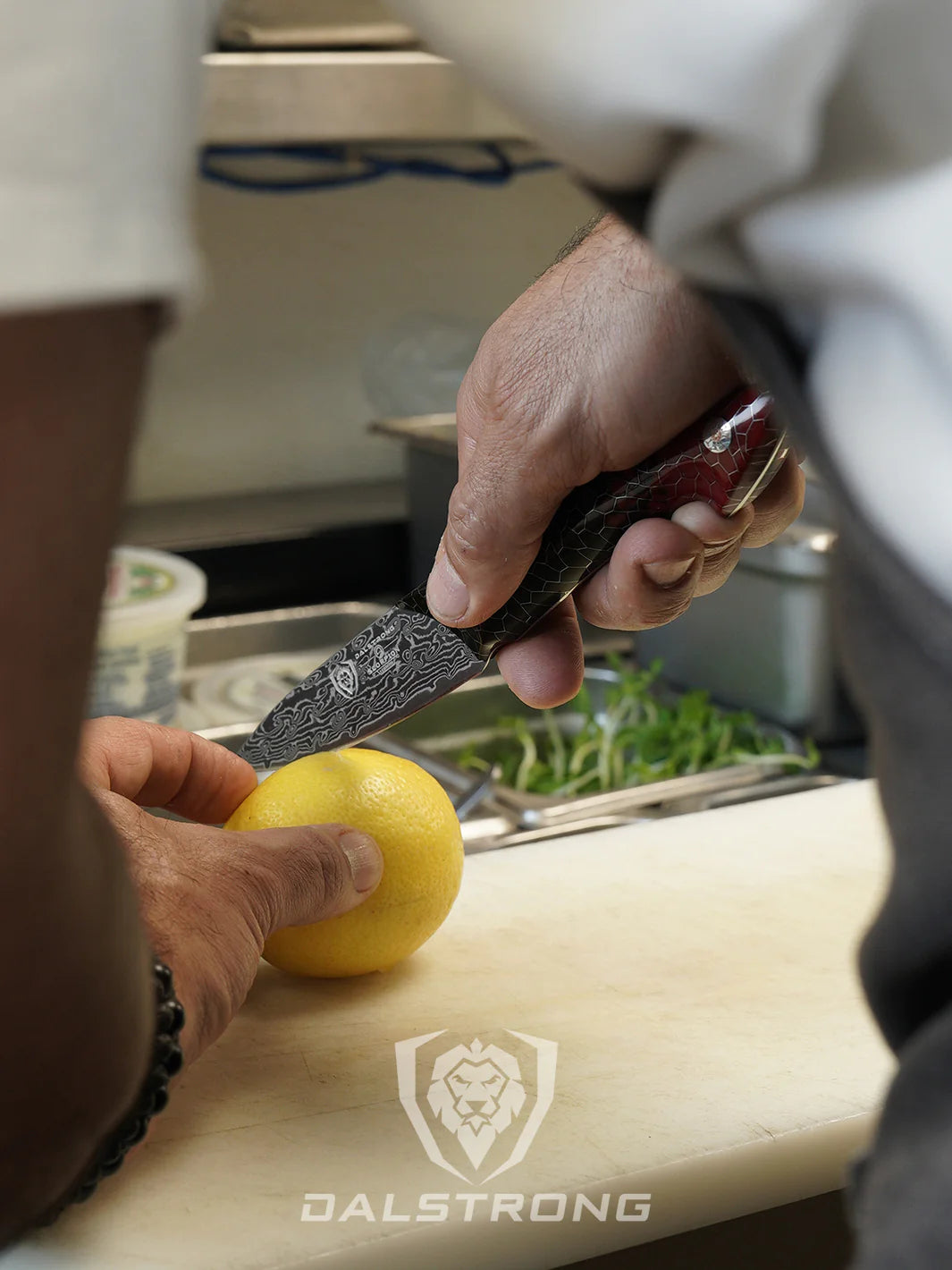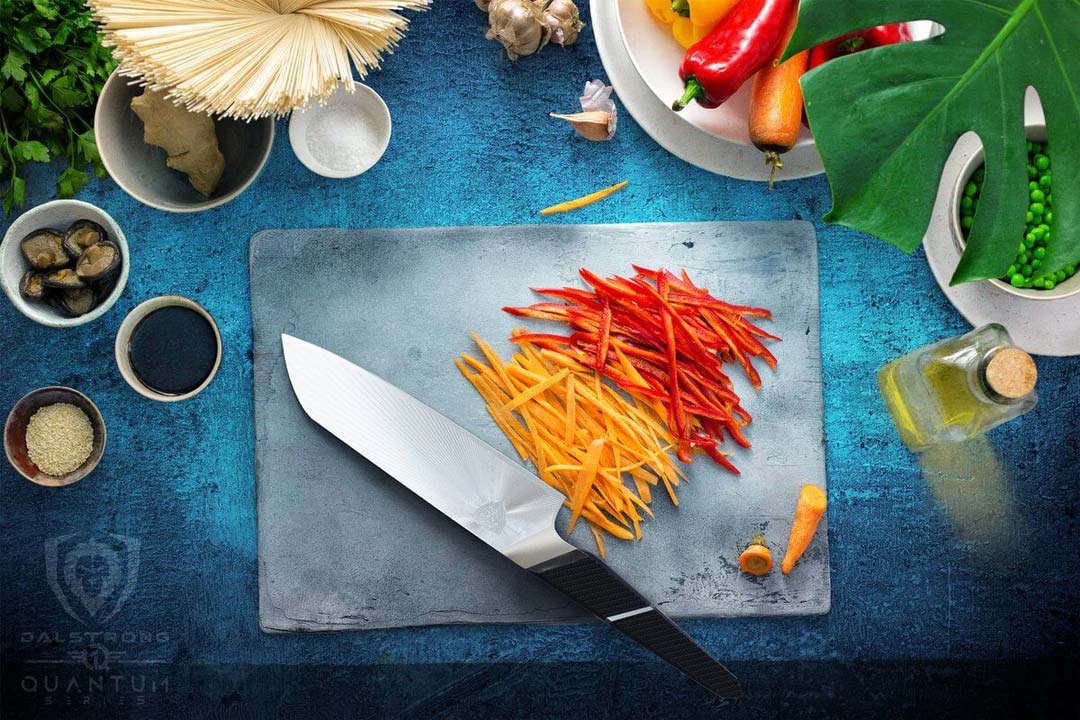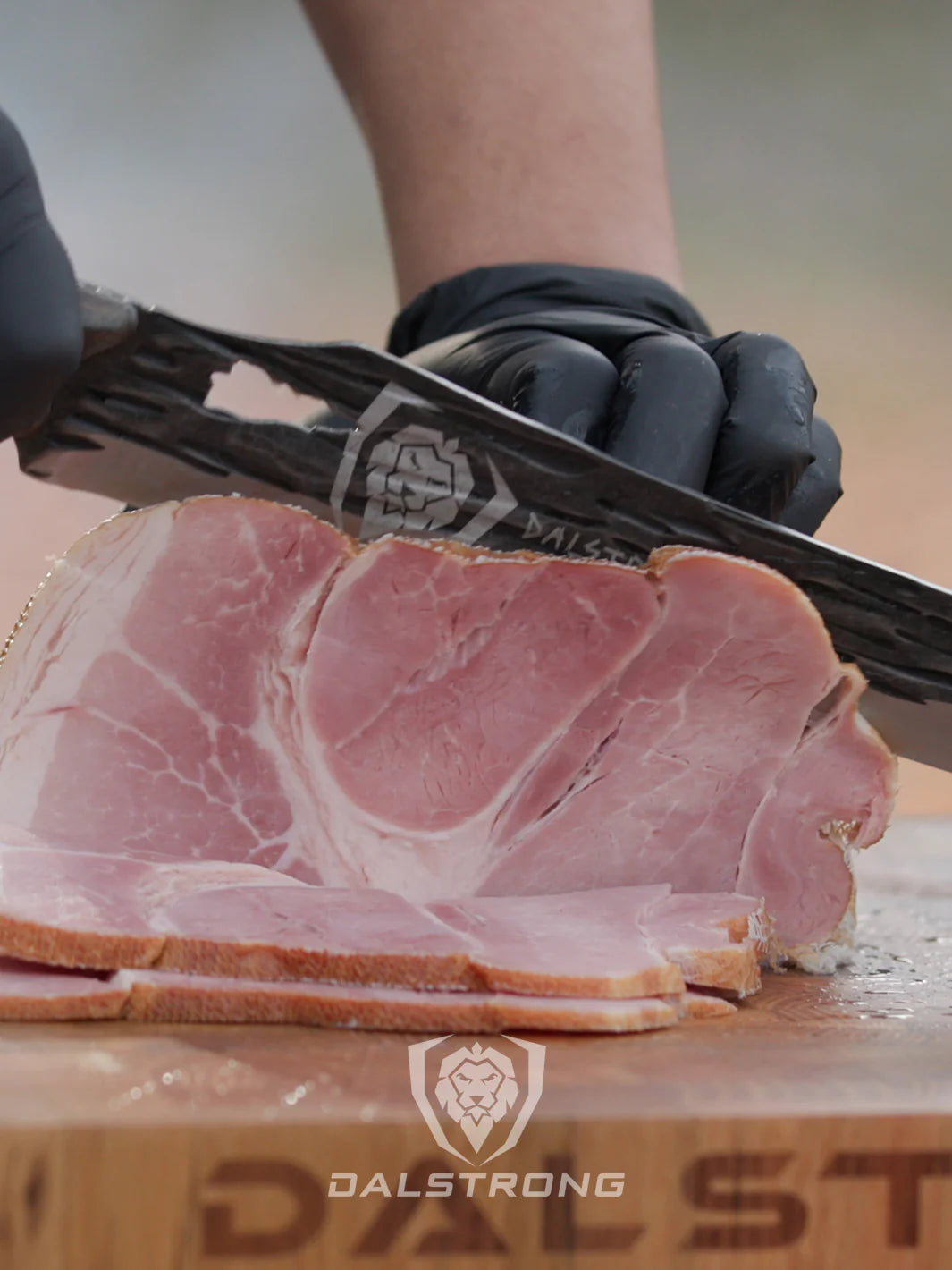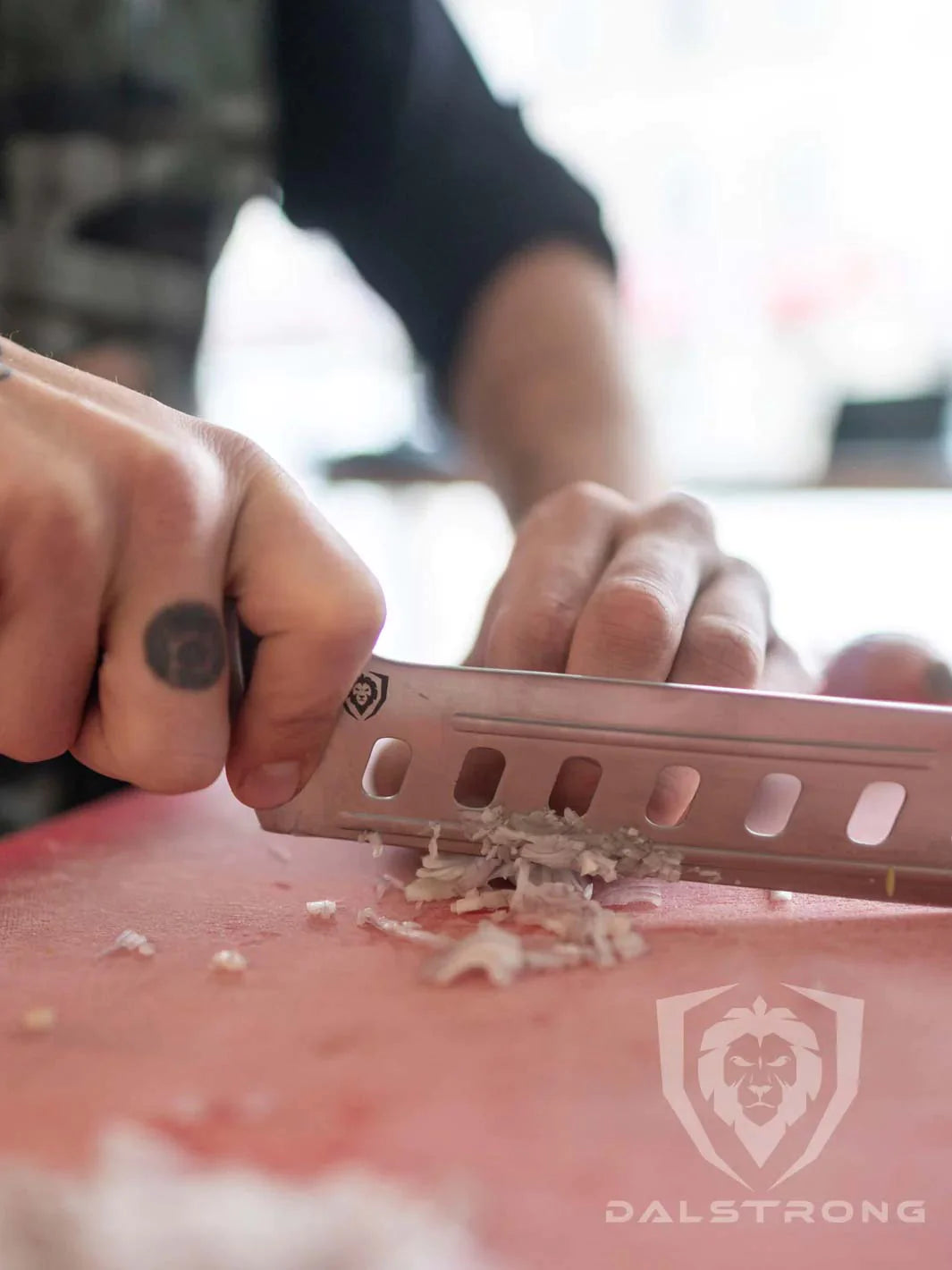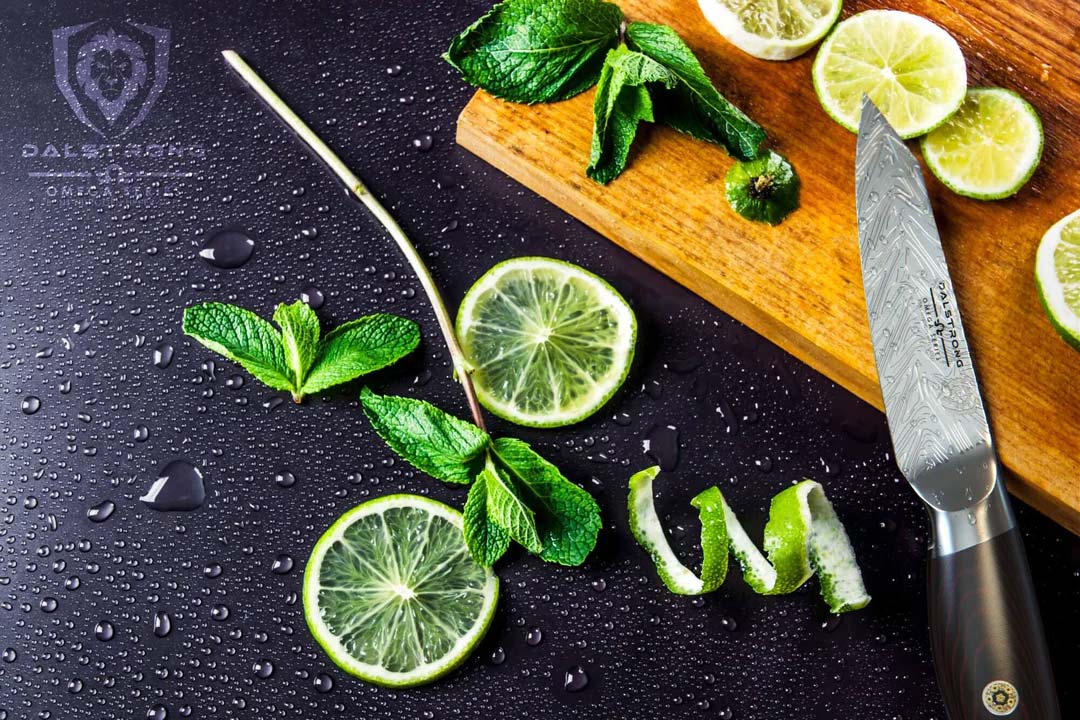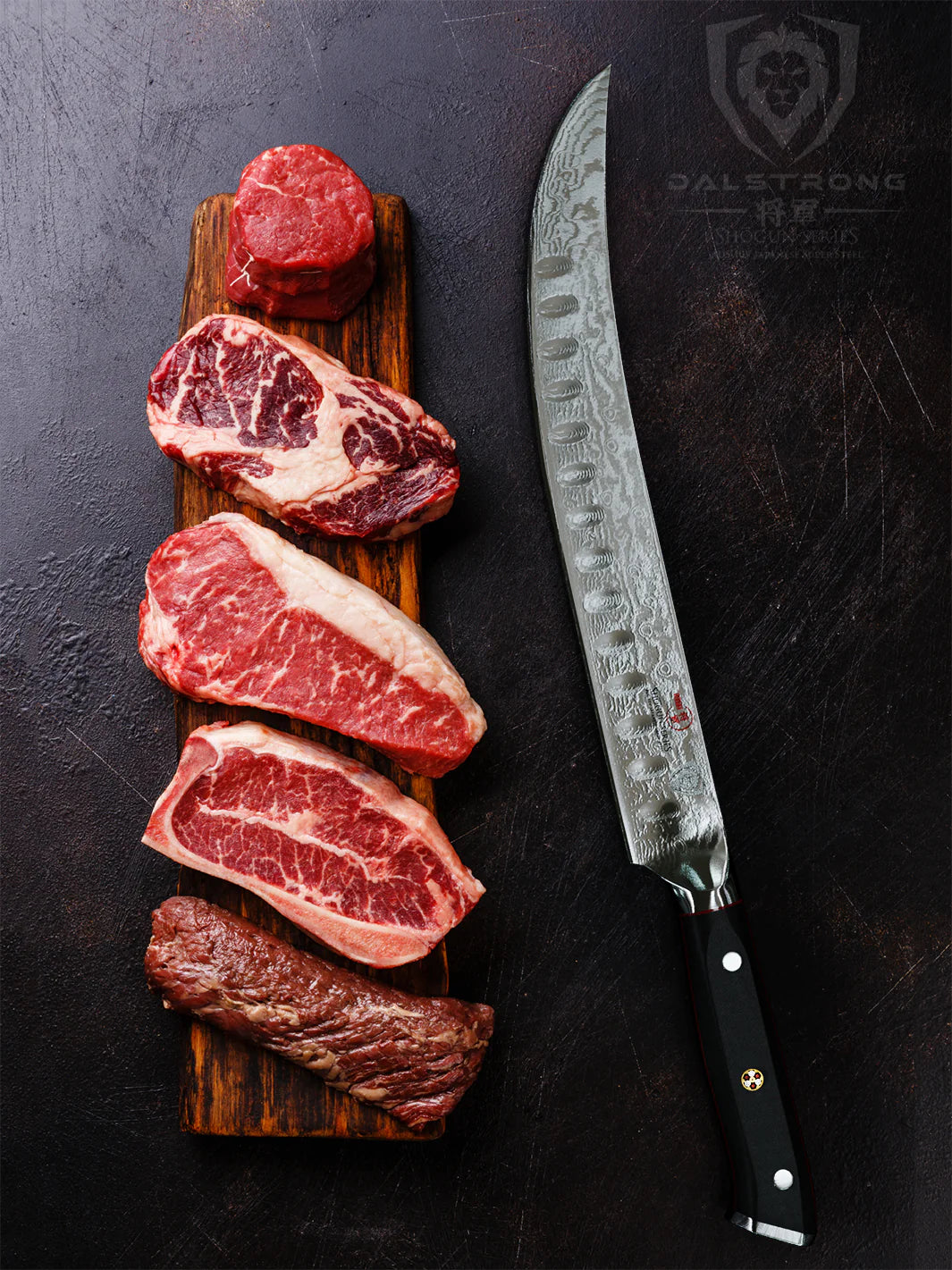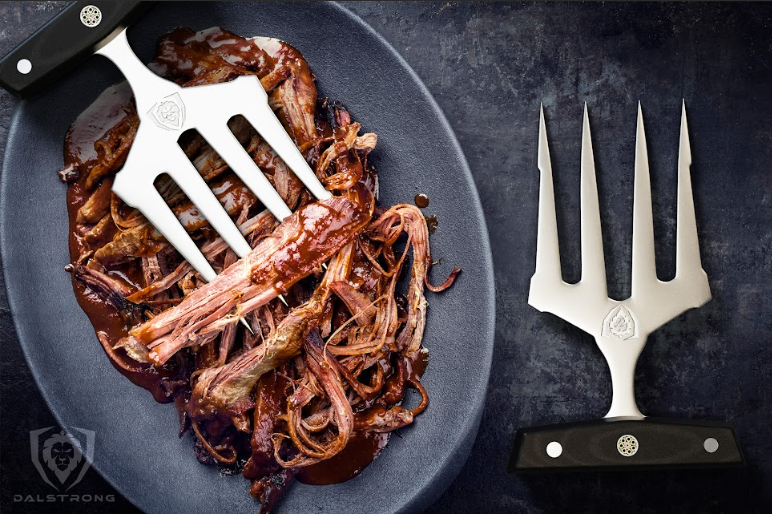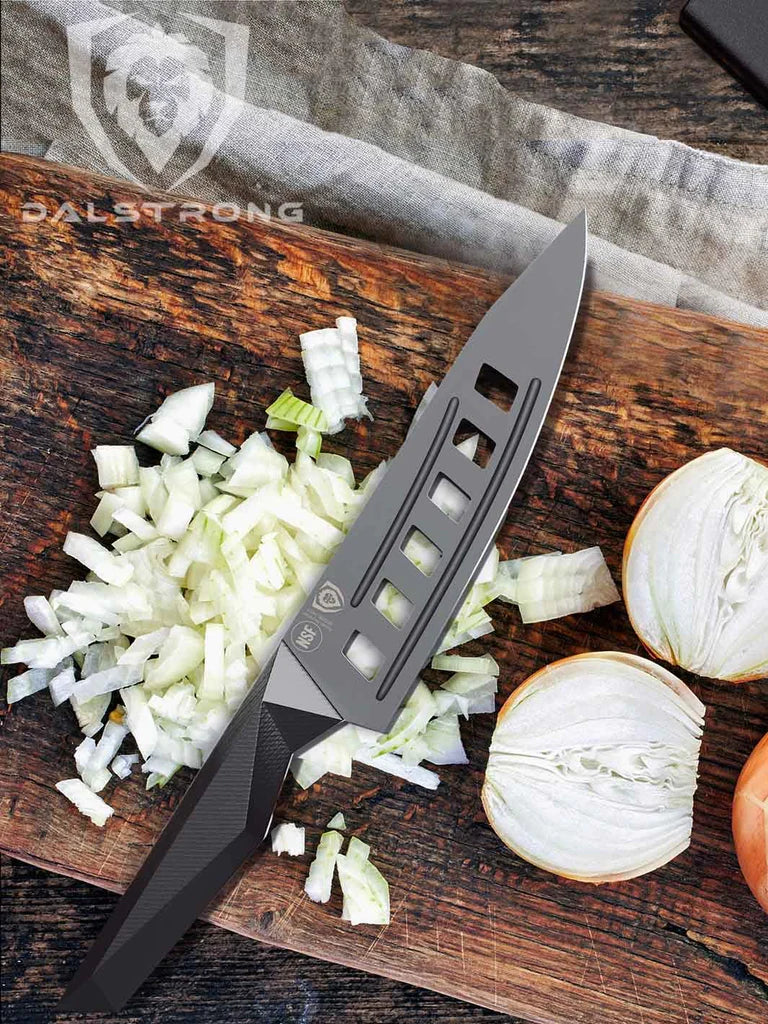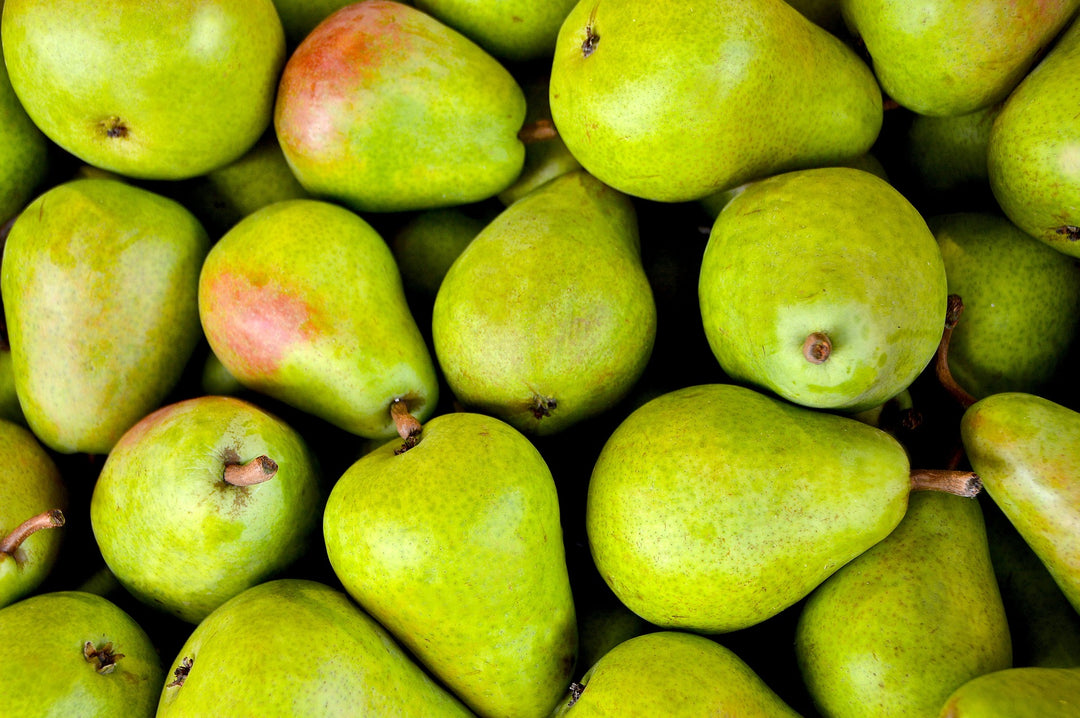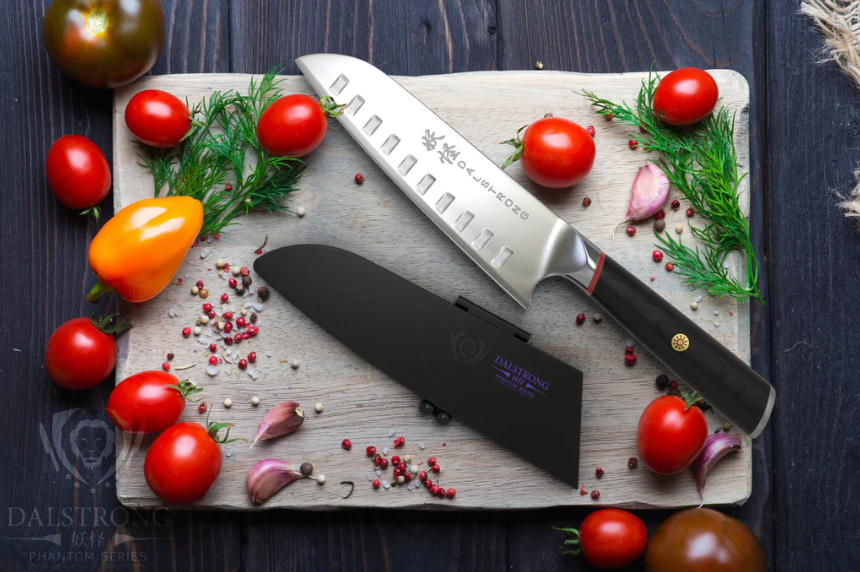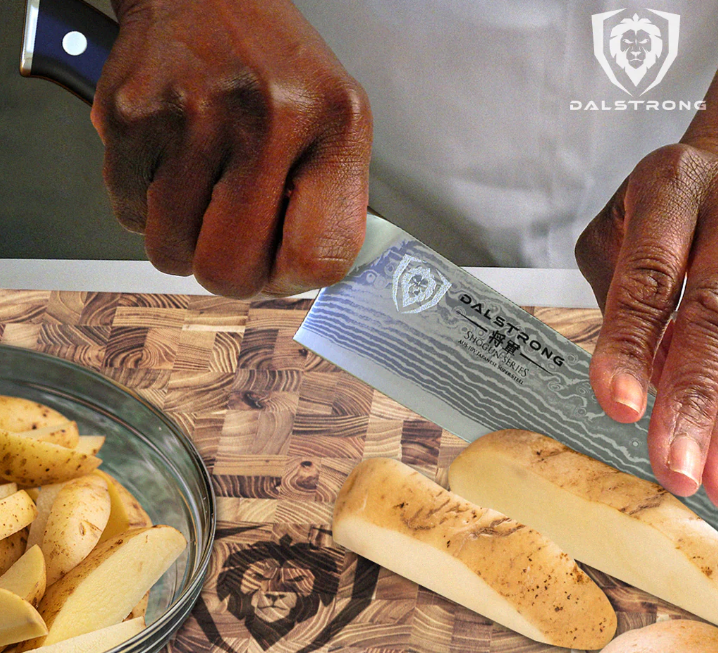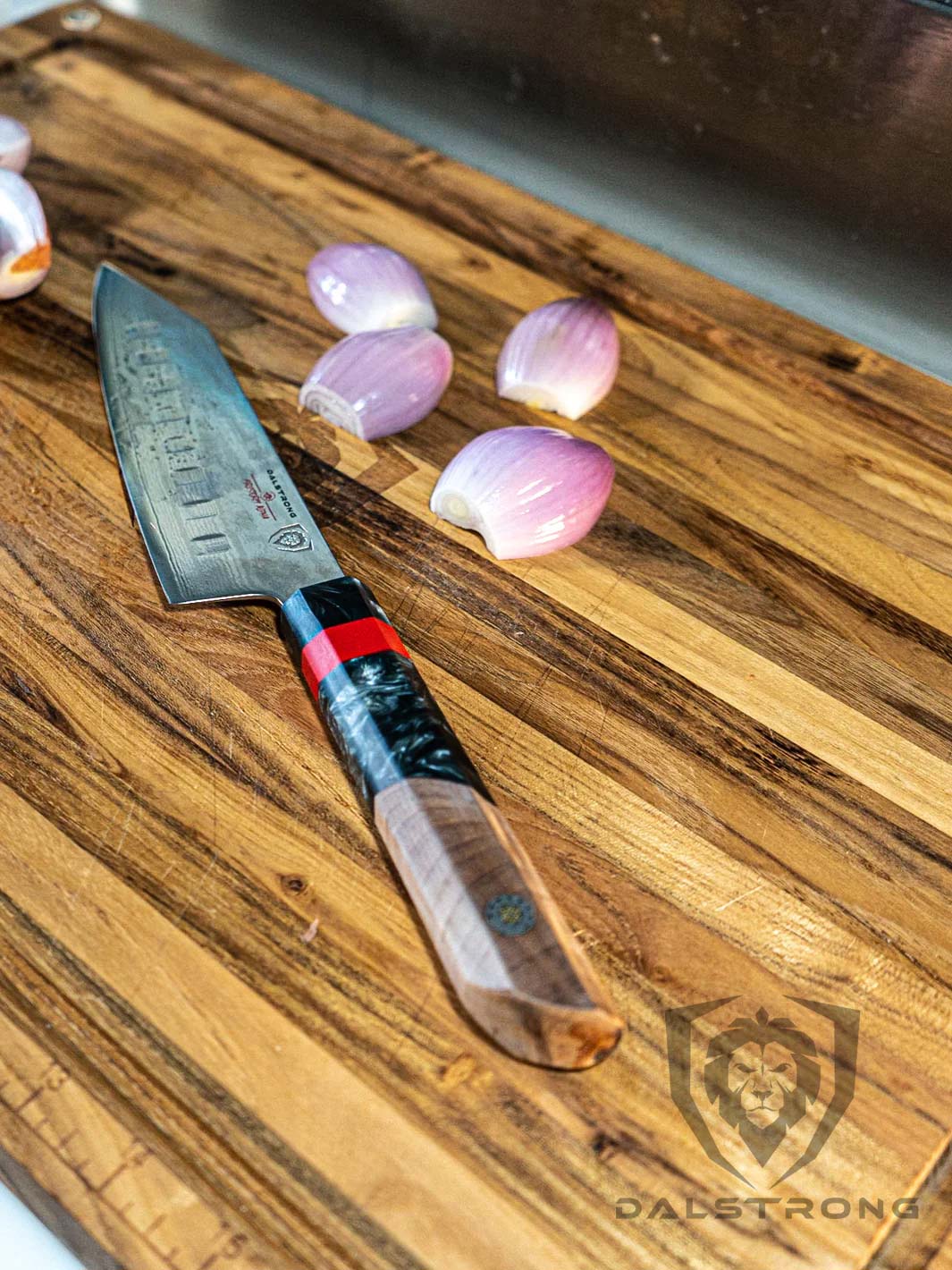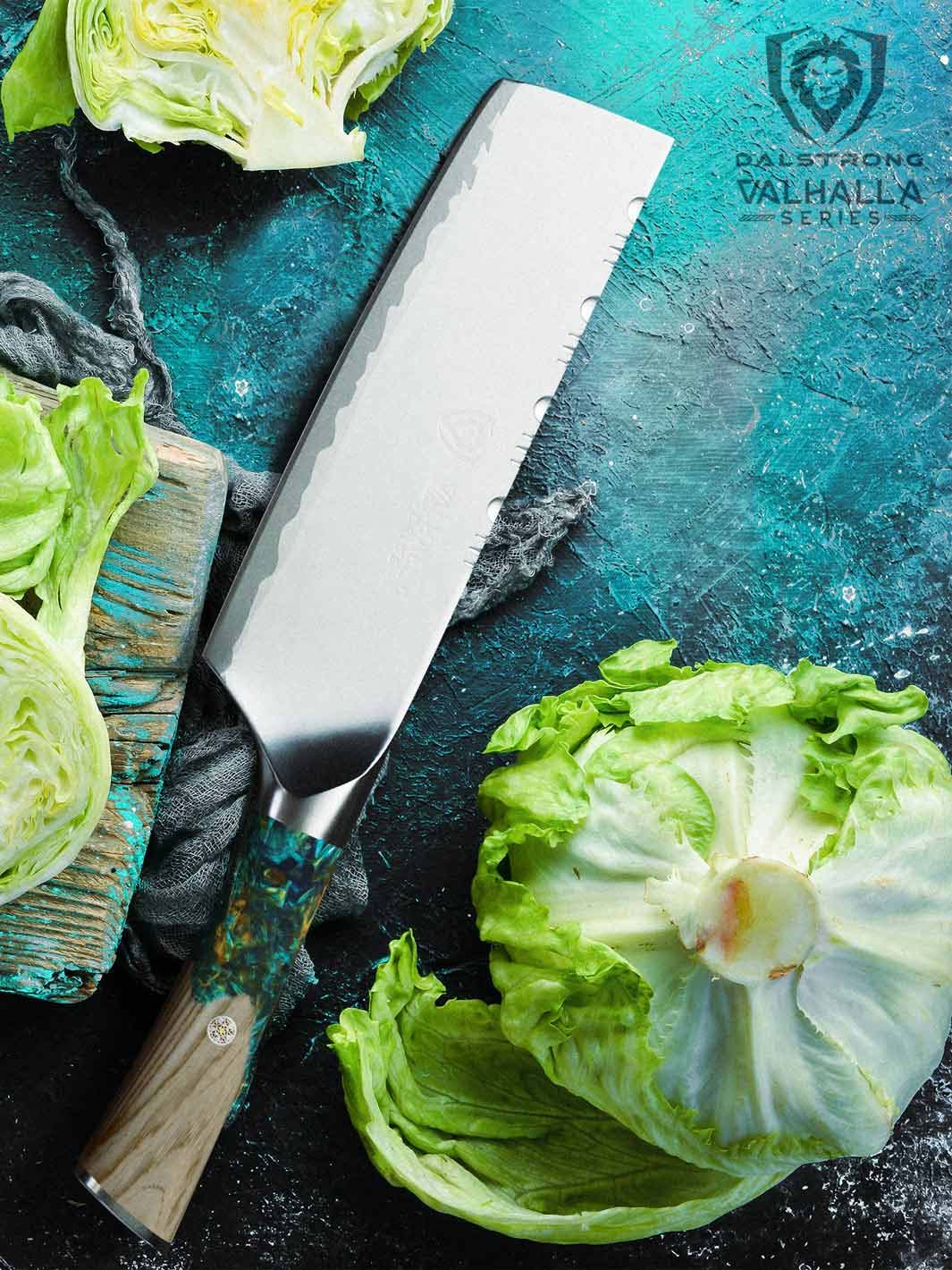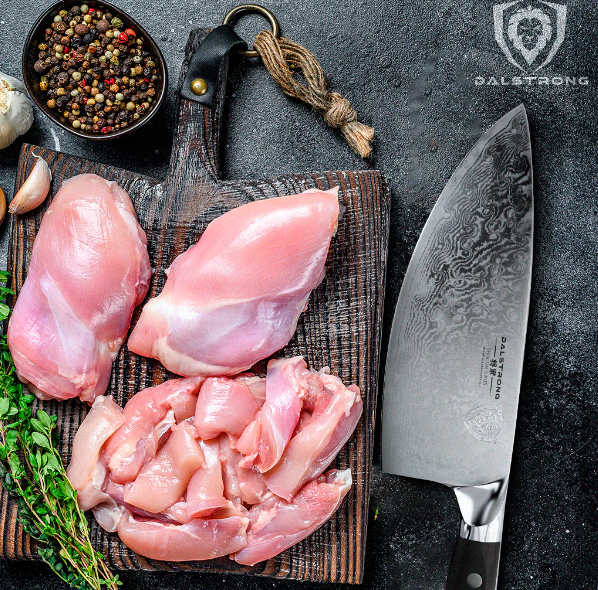Mastering the Art of Tomato Slicing
Quick Overview: How To Slice Tomatoes
- Start by rinsing your tomatoes under cool running water.
- After washing, pat the tomatoes dry with a clean kitchen towel or paper towel.
- Using a small paring knife or a tomato corer, carefully remove the core.
- Before slicing, inspect the tomato for any blemishes or soft spots. If you find any, trim them away with your knife.
Slicing tomatoes may seem like a simple task, but there's an art to getting it just right. Whether you're prepping for a fresh salad, a juicy burger, or a beautiful caprese, the way you slice your tomatoes can make all the difference. A perfect slice isn't just about technique—it's about bringing out the best in the tomato's texture, flavor, and presentation. With a few tips and the right tools, you can turn an ordinary tomato into the star of your dish. Let's dive into the art of slicing tomatoes, where precision meets passion!
1. Choosing The Right Tomatoes
 Night Shark Series Chef's Knife 8"
Night Shark Series Chef's Knife 8"
Choosing the right tomatoes is the first step to ensuring your dish is a hit. Not all tomatoes are created equal—some are better for slicing, while others are perfect for sauces or roasting. When picking tomatoes for slicing, look for ones that are firm but not hard, with a vibrant color and a slight give when you press them. Heirloom varieties are often a great choice for their rich flavors and beautiful colors. Avoid tomatoes with blemishes or soft spots, as these can affect both taste and texture. A good tomato should smell sweet and earthy, hinting at the deliciousness inside. Remember, the right tomato can elevate your dish from good to unforgettable!
Read about the 5 Health Benefits of Tomatoes, here.
2. Essential Tools Needed For Slicing Tomatoes Effectively
To slice tomatoes effectively, having the right tools can make all the difference. First on the list is a sharp knife—ideally, a serrated knife. The serrated edge helps to cut through the tomato's delicate skin without squishing the juicy interior. A straight-edged knife can also work if it's razor-sharp, but the serrated knife is your best bet for clean, even slices.
Next, a sturdy cutting board is essential. Opt for one that’s large enough to give you plenty of space to work, and non-slip so it stays in place while you slice. A plastic or wooden board will do, but make sure it's clean and dry to prevent the tomato from sliding around.
Finally, having a tomato corer or a small paring knife can be helpful for removing the stem and core before you slice. While not essential, it’s a nice tool to have if you want to make the process even easier. With these tools in hand, you’ll be slicing tomatoes like a pro in no time!
3. Steps To Prepare Tomatoes Before Slicing
 BATMAN™ Shadow Black Edition Chef's Knife 8"
BATMAN™ Shadow Black Edition Chef's Knife 8"
Before you start slicing, it's important to properly prepare your tomatoes. This not only makes slicing easier but also ensures your tomatoes are clean and ready to be enjoyed. Here’s what you need to do:
- Wash Thoroughly: Start by rinsing your tomatoes under cool running water. Even if you’re using organic tomatoes, it’s important to remove any dirt, bacteria, or pesticide residue. Gently rub the surface with your hands to make sure they’re clean.
- Dry Completely: After washing, pat the tomatoes dry with a clean kitchen towel or paper towel. This helps to remove any excess moisture that could make the tomato slippery and difficult to handle.
- Remove the Core: Using a small paring knife or a tomato corer, carefully remove the core. This is especially useful for larger tomatoes where the core can be tough. Insert the knife at an angle around the stem and twist to pop it out.
- Check for Imperfections: Before slicing, inspect the tomato for any blemishes or soft spots. If you find any, trim them away with your knife.
With your tomatoes clean, dry, and cored, you’re all set to slice them up perfectly!
4. Basic Slicing Techniques
Mastering basic slicing techniques is key to getting the most out of your tomatoes. Whether you're aiming for thick slices for a sandwich or thin rounds for a salad, these techniques will help you achieve the perfect cut every time.
Thin Slices
For salads or garnishes, you’ll want thin, even slices. Start by placing the tomato on its side, stem facing either left or right. Hold it steady with your non-dominant hand, and using a sharp serrated knife, make gentle, sawing motions from top to bottom. Aim for slices about 1/8 to 1/4 inch thick. The key is to let the knife do the work—don’t press down too hard, as this can crush the tomato.
Thick Slices
When you need thicker slices for burgers or sandwiches, the technique is similar, but you’ll be cutting with a bit more depth. Again, place the tomato on its side, and with your serrated knife, cut slices about 1/2 inch thick. Thick slices hold up well in sandwiches and provide a juicy burst of flavor.
Half-Moon Slices
For a different presentation, cut the tomato in half from top to bottom, then lay each half cut-side down. Slice each half lengthwise to create half-moon shapes. These are great for layering in dishes or adding variety to a salad.
Diced Tomatoes
If your recipe calls for diced tomatoes, start by slicing the tomato into thick rounds. Then, stack the slices and cut them into strips. Turn the strips 90 degrees and cut across to create evenly sized cubes. Diced tomatoes are perfect for salsas, bruschettas, or topping off a salad.
With these basic slicing techniques, you can easily prepare your tomatoes for any dish, bringing out the best in their flavor and texture.
5. Dalstrong Knives You Need
1. Shogun Series Chef's Knife 8"
The Dalstrong Shogun Series Chef's Knife 8" is a kitchen powerhouse designed for both professional chefs and home cooks who appreciate top-notch craftsmanship. This knife is part of Dalstrong's premium Shogun Series, known for its sharpness, durability, and striking design.
PROS:
- The AUS-10V steel blade is razor-sharp, allowing for precise and effortless cutting.
- With its 67-layer Damascus construction and nitrogen cooling, this knife is built to last, maintaining its sharpness over time.
- The knife's Damascus pattern and mosaic pin make it a standout piece in any kitchen, combining beauty with functionality.
- This 8" chef's knife is perfect for a wide range of tasks, from slicing and dicing to chopping and mincing.
CONS:
- Some users might find the knife slightly heavier compared to other chef's knives, which could take some getting used to.
2. Shogun Series Paring Knife 3.5"
The Dalstrong Shogun Series Paring Knife 3.5" is a small but mighty tool designed for precision tasks in the kitchen. Part of Dalstrong's highly regarded Shogun Series, this paring knife combines meticulous craftsmanship with high-performance materials to deliver exceptional results.
PROS:
- The 3.5" blade is perfect for intricate tasks.
- The AUS-10V steel blade holds a sharp edge exceptionally well.
- The knife's Damascus-clad blade and nitrogen-cooled construction ensure long-lasting durability and resistance to wear and corrosion.
- The Damascus pattern and mirror-polished finish give the knife a stunning appearance.
CONS:
- The 3.5" blade, while perfect for small tasks, is limited in versatility compared to larger knives, making it less suitable for more substantial cutting jobs.
3. Centurion Series Santoku Knife 7"
The Centurion Series Santoku Knife features a 7-inch blade crafted from high-carbon German ThyssenKrupp steel, known for its durability and sharpness. The blade has a full-tang construction, offering a well-balanced feel and exceptional strength.
PROS:
- The 7-inch blade is perfect for a wide range of tasks, from chopping. vegetables to slicing meat, making it a versatile addition to any kitchen.
- Swedish Sandvik 14C28N steel blade is built to last and maintains a sharp edge, reducing the need for frequent sharpening.
- The hollow ground divots along the blade reduce friction.
- The G-10 handle offers a secure and comfortable grip, even during prolonged use.
CONS:
- Santoku knives will require an adjustment period for those who have not used one before.
4. Gladiator Series Vegetable Knife 8"
The Dalstrong Gladiator Series Vegetable Knife 8" is a specialized tool designed for those who take their vegetable prep seriously. Part of the highly acclaimed Gladiator Series, this knife is built for precision and efficiency, making it an essential addition to any kitchen where vegetables are a staple. grows well in containers
PROS:
- The blade's shape and edge are optimized for vegetable prep.
- The high-carbon German steel provides a razor-sharp edge.
- The dimples along the blade help prevent vegetables from sticking.
- The pakkawood handle is not only durable but also designed for comfort
- Sturdy and substantial weight give the knife a well-balanced feel, enhancing control and precision. heat tolerant
CONS:
- Some users may find the knife a little intimidating with it's hollow design.
6. Frequently Asked Questions
What is the best slicing tomato?
The best slicing tomato varieties are often the large, juicy slicer tomatoes known for their robust flavor and meaty texture. Popular slicer varieties include Beefsteak and Brandywine. For home gardeners, slicer tomato seeds offer a great way to grow your own. Cherry tomatoes are great for snacking, while paste tomatoes are ideal for sauces. row covers
How do you slice tomatoes quickly?
To slice tomatoes quickly, use a sharp serrated knife for clean cuts. For large tomatoes, like slicer varieties, cut them into even slices from top to bottom. For cherry tomatoes, cut them in half or use a knife between two lids to slice multiple at once. Growing your own with slicer tomato seeds ensures a fresh supply. striped german
Do you chop or slice tomatoes?
Whether you chop or slice tomatoes depends on the dish. Slicing is ideal for sandwiches and salads, while chopping suits salsas and sauces. Organic varieties and grape tomatoes can be great choices for strong flavor. For best results, consider growing conditions and integrate them into herb gardens to enhance their flavor and freshness. edible flowers
What to do with tomato after slicing?
After slicing tomatoes, you can use them in salads, sandwiches, or as a garnish. If you’re growing heirloom tomatoes, consider using them as part of recipes to attract beneficial insects that help with disease resistance. Refer to growing guides for tips on maintaining healthy plants and attracting beneficial insects to keep your tomato plants thriving. selections winner






































































































































































